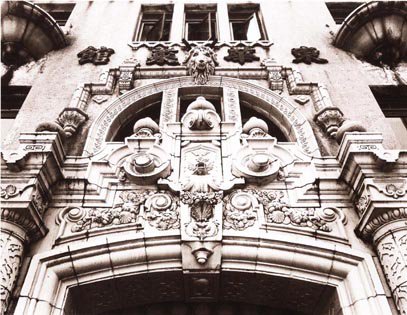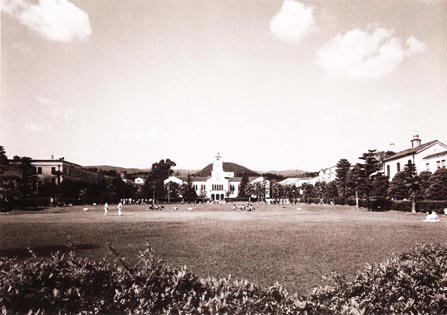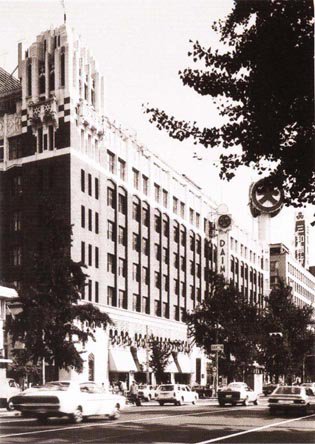Buildings Designed by Vories Elsewhere in Japan
The architectural legacy of William Merrell Vories extends across Japan in the form of churches, hospitals, educational facilities, and private homes. The following are some of his most noteworthy buildings:
Tohkasaikan (formerly Yaomasa Restaurant), Kyoto

This five-story Spanish baroque building by the Kamo River cuts an imposing figure on the southwest side of Shijo Bridge. The only restaurant designed by Vories, it was completed in 1926 and features elaborate terra-cotta decorations of scallop shells, seafood, vegetables, and fruit on its exterior walls.
Komai Residence, Kyoto
This Spanish-style two-story house with a red-tiled roof was built in 1927 for Dr. Komai Taku (1886–1972), a prominent zoologist. It is a particularly well-preserved example of Vories’s residential work and has many of the original furnishings. The interior is simple and spacious, and it receives plenty of light through windows that look out onto the garden. The house was donated to the Japan National Trust in 2002 and is open to the public on Fridays and Saturdays.
Uegahara Campus of Kwansei Gakuin University, Nishinomiya

Completed in 1929, this Spanish mission-style campus is distinguished by its cream-colored buildings with red-tiled roofs and is often described as one of the most beautiful university campuses in the country. The symmetrical layout features a clock tower at its center and has Mt. Kabuto as its dramatic background—a scene perfectly framed by the main gate.
Daimaru Department Store Shinsaibashi, Osaka

The main building of the Daimaru flagship store was built between 1922 and 1933. The neo-Renaissance exterior contrasts with an interior featuring art deco furnishings, ceiling frescoes, and stained glass. The building underwent extensive renovations between 2016 and 2019 but its original appearance was largely preserved, except for a high-rise section that was added on top.
Hilltop Hotel (formerly Sato Shinko Seikatsukan), Tokyo
Completed in 1937, this art deco structure was originally built as the headquarters of a foundation dedicated to social development. It was converted into a hotel in 1954 and became popular with renowned writers such as Kawabata Yasunari (1899–1972), Mishima Yukio (1925–1970), and Endo Shusaku (1923–1996).


